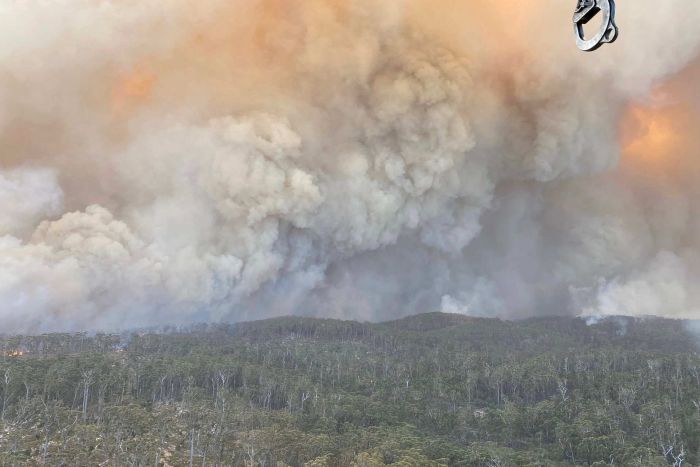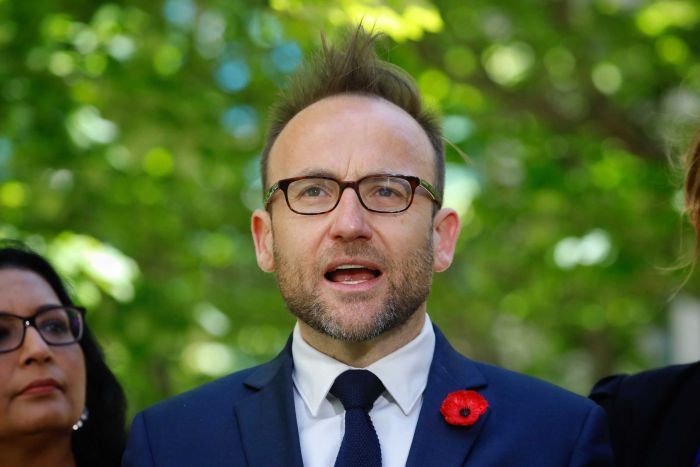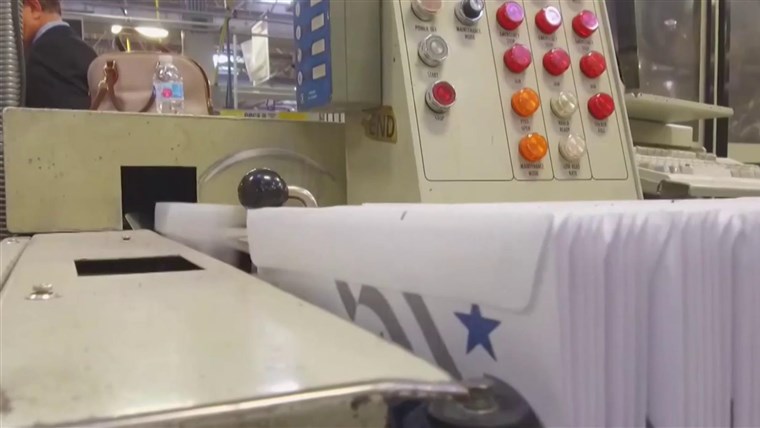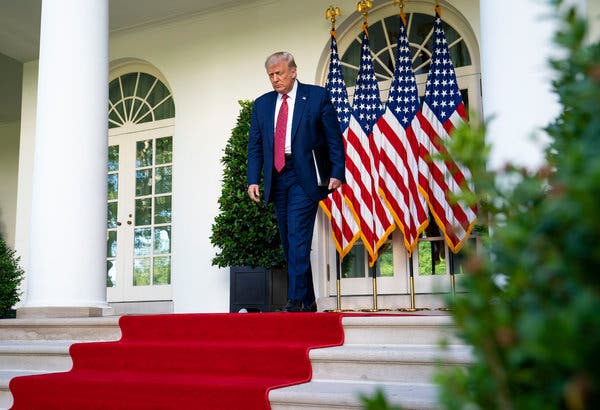By Josh Holloway
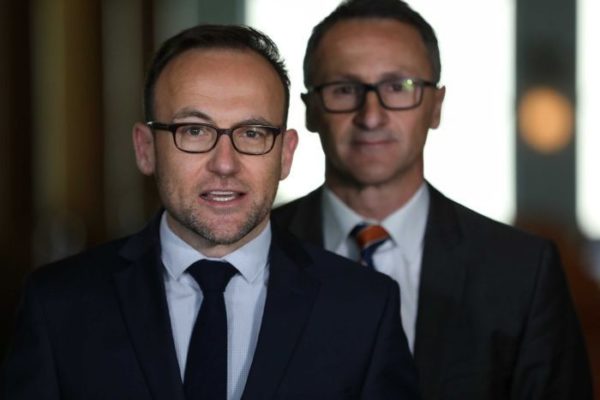 Photo: Adam Bandt has replaced Richard Di Natale as leader of the Greens. (ABC News: Luke Stephenson)
Photo: Adam Bandt has replaced Richard Di Natale as leader of the Greens. (ABC News: Luke Stephenson)Related Story: Adam Bandt elected as new federal Greens leader
Related Story: Greens leader Richard Di Natale resigns and plans to quit federal politics
Related Story: Adam Bandt elected as new federal Greens leader
The selection of Adam Bandt as the new parliamentary leader of the Australian Greens offers the party a rare chance for strategic and policy reset following a decade-long electoral plateau.
With a federal Coalition government proving ineffective in managing the effects of climate change and a slowing economy, and a Labor Opposition shedding its ambitious policy aims following the 2019 federal election loss, one could reasonably expect a “third force” in Australian politics to be enjoying electoral popularity.
Yet in this summer of record heat and unprecedented bushfires, the Greens have been markedly absent from public debate.
Bandt has laid out his priorities
Yet as party leader Bandt will now wield significant influence over party priorities and broad strategy.
In his first press conference after winning the leadership Bandt gave some insight to this strategy, linking the “climate crisis” with crises of housing, jobs, and inequality.
Mirroring developments in progressive politics in the United States, Bandt called for a Green New Deal comprising transformative, government-led industrial policy and provision of universal services.
Specifically, he outlined three immediate priorities: dental care inclusion in Medicare, free education, and a “manufacturing renaissance” driven by cheap, clean energy.
As leader, Bandt will likely continue to highlight these links between climate policy on the one hand, and economic, industrial, and social policy on the other.
His ideological position is more traditionally left-wing than is usually associated with the party, emphasising public ownership, public wealth, and community-driven responses to the links between climate change and capitalism.
However, Bandt will face a challenge in defining a Green New Deal and explaining it to the public.
The links between free dental check-ups and climate change mitigation are not readily evident.
There is a risk that the Green New Deal appeal becomes diluted, perceived as a random grab-bag of existing Greens policies.
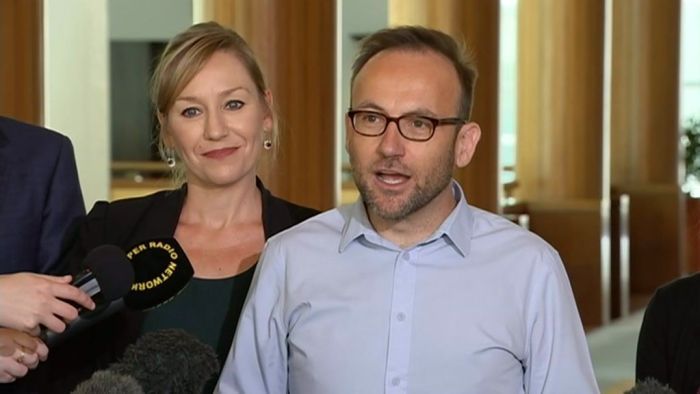 Video: Newly elected Greens leader Adam Bandt pledges to fight against climate change, job crisis and inequality. (ABC News)
Video: Newly elected Greens leader Adam Bandt pledges to fight against climate change, job crisis and inequality. (ABC News)These are essential goals
Bandt has detailed his hope for future balance of power roles for the Greens in both the House and Senate.
Indicating how this power might be used, Bandt highlighted the ACT Labor/Greens cabinet as an example of what he hoped to achieve federally.
Aligning with Labor — if any party — is what Greens supporters would expect, but does run the risk of the Greens becoming “captive” as merely the left-wing flank of its larger competitor.
There is also little indication yet that Bandt can foster more constructive Labor-Greens relations than his predecessors.
Bandt’s goal of expanding Greens representation in the House — winning seats most likely held by current Labor MPs — will only exacerbate existing animosity between the two parties.
Regardless, for the Greens to fulfil such lofty goals, Bandt will have to help achieve something that so far has eluded the party: increasing its electoral appeal beyond the rather narrow base of just 10 per cent or so of the public.
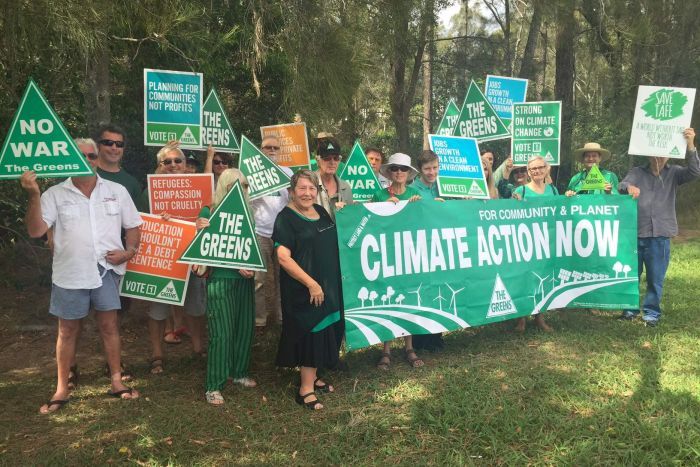 Photo: Adam Bandt will need to increase the Greens’ electoral appeal from a base of around 10 per cent of voters. (Tom Lowrey)
Photo: Adam Bandt will need to increase the Greens’ electoral appeal from a base of around 10 per cent of voters. (Tom Lowrey)Curious timing for a leadership change
Bandt rises to the leadership of a party whose internal divisions have been plastered over, rather than resolved.
In this vein, the timing of the Greens leadership transition is curious.
The Australian Greens have undergone just three leadership changes in the party’s history: from Bob Brown to Christine Milne, to Richard Di Natale, and now to Bandt.
In shifting to Bandt, the Greens may again have a leader well suited to the times, capable of widening the party’s appeal as Brown achieved in the Howard era.
Milne, a leader at her best when offering transformative appeals to restructure the economy and humanity’s relationship with nature, helmed the party just as the electorate was taking a conservative turn.
Di Natale appealed to “mainstream” progressives and offered constructive policymaking, positioning the party as part of establishment politics — just as the public was turning on the establishment.
The implications of a leadership change are somewhat different for the Greens relative to other parties.
Despite a creeping centralisation of power toward the party room, the Greens’ party organisation remains relatively robust, with members determining policy aims and shaping campaigns.
The very way in which Bandt was selected as leader — a behind-closed-doors ballot of elected Greens parliamentarians — is a persistent point of contention within the party.
Each Greens leadership transition has followed a similar process of undemocratic stitch-up, the party room ballot merely a formality reflecting pre-determined results.
The Australian Greens are somewhat of an anomaly among Green parties internationally — in fact, among parties in Western democracies generally — in giving its members zero input into the selection of party leader.
It is a striking contradiction for a party with a core value of participatory democracy.
His challenge will be to unite his party
On the other hand, Bandt may be able to reduce internal party tensions, particularly those between state branches.
His left-wing credentials will be welcome to the more radical elements in the party that perceived Di Natale’s leadership as instrumental in shifting the Greens toward the centre of the political spectrum.
Crucially, while Bandt, like Di Natale, is from the party’s Victorian branch, there is less enmity between Bandt and NSW Greens figures.
In 2017, Bandt was the lone Greens MP not to vote in favour of expelling then-NSW Greens Senator Lee Rhiannon from contentious policy discussions in party room.
Though internal party matters haven’t featured in Bandt’s communications thus far as leader, he did make explicit his hope for relationships with other parties.
Following a drawn-out process beginning in earnest in 2016, Greens members are set to vote in May on a plebiscite covering a new means of selecting the party leader.
A survey of members in 2019 found an overwhelming majority in favour of change away from the party room selection of leader.
As with Di Natale’s tenure, Bandt’s leadership could be coloured by this exclusion from decision-making of members agitating for greater say over party direction.
Dr Josh Holloway is a Research Associate in the College of Business, Government & Law at Flinders University, South Australia.
Topics: greens, political-parties, government-and-politics, leadership, australia, canberra-2600
